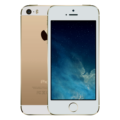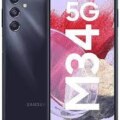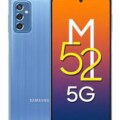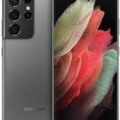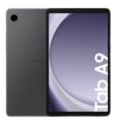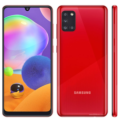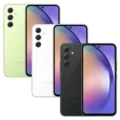- Home
- All Products
- Mobiles
- Apple iPhone 8 Price & Specs
Apple iPhone 8 Price & Specs


-
Processor: Apple A11 Bionic (10 nm)
-
RAM: 2 GB
-
Storage: 64 GB, 256 GB
-
Display: 4.7 inches
-
Camera: 12 MP
-
Battery: iOS 11+
Specs
General
| Device Type | Smart Phone |
| Model | Apple iPhone 8 |
| Announced | 12 September, 2017 |
| Released | 22 September, 2017 |
| Status | Available |
Network
| 2G Network |
SIM1: GSM 850 / 900 / 1800 / 1900 |
| 3G Network |
HSDPA 850 / 900 / 1700(AWS) / 1900 / 2100 |
| 4G Network |
LTE band 1(2100), 2(1900), 3(1800), 4(1700/2100), 5(850), 7(2600), 8(900), 12(700), 13(700), 17(700), 18(800), 19(800), 20(800), 25(1900), 26(850), 28(700), 29(700), 30(2300), 34(2000), 38(2600), 39(1900), 40(2300), 41(2500), 66(1700/2100) |
| SIM <strong>SIM</strong> (Subscriber Identity Module) is a small card that contains mobile network subscriber's account information. This allows the phone using the card to attach to a mobile network. The SIM card is most commonly associated with GSM and UMTS mobile networks. Moving a SIM card from one phone to another allows a subscriber to switch mobile phones without having to contact their mobile network carrier. SIM cards can also be used by a phone to store limited amounts of data, such as phone numbers and text messages. | Nano SIM |
Design
| Type <strong>Design Type</strong> called form factor refers to a mobile phone's size, shape, and style as well as the layout and position of major components of phone. There are three major form factors seen in mobile phones => bar phones, folding phones and sliding phones. | Bar |
| Dimensions | 138.4 x 67.3 x 7.3 mm |
| Weight | 148 grams |
| Colors |
Gold, Silver, Space Gray |
Display
| Display Type <strong>Display Technology => </strong> A number of display technologies and types used in mobile phones => TFT (Thin Film Transistor), IPS (In-Place Switching), OLED (Organic Light Emitting Diode), AMOLED (Active-Matrix Organic Light-Emitting Diode), Super AMOLED (an even advanced version of AMOLED), Resistive Touchscreen (Resistive touchscreens contain two layer of conductive material with a very small gap between them which acts as a resistance), Capacitive Touchsceen (Capacitive touchscreen technology consists of a layer of glass coated with a transparent conductor) | IPS LCD |
| Size | 4.7-inch |
| Resolution | 750 x 1334 pixels |
| Display Colors <strong>Display Colors</strong> is refers to the number of different shades of colors that the screen is capable of displaying => 64K colors, 256K colors and 16 million colors, Obviously 16M is highest available range of colors and better than others. | 16M colors |
| Pixel Density <strong>Pixel Density (PPI)</strong> is refers to the concentration of pixels on a particular display, measured in pixels per inch (ppi). Pixel density is calculated by dividing the diagonal pixel resolution of a display by its diagonal size, higher pixel density better display quality. | 326 ppi |
| Display Protection <strong>Display Protection => </strong> Gorilla Glass is a special alkali-aluminosilicate glass shield with exceptional damage resistance that helps protect mobile displays from scratches, drops, and bumps of everyday use, It is always better to go for a smartphone with Gorilla Glass for that added protection and peace of mind. | Ion-strengthened glass, oleophobic coating |
| Features |
Wide color gamut display, 3D Touch display &amp;amp;amp;amp; home button, True-tone display |
Software
| Operating System <strong>OS => </strong> Every computer system run on a base software called Operating System (OS). Operating System controls all basic operations of the computer (such as smartphone, PDAs, tablet computers and other handheld devices). The Operating System allows the user to install and run third party applications (apps), apps are used to add new functionality to the device. | iOS 10+ |
| User Interface <strong>UI</strong> or user interface of a device is the look and feel of the on-screen menu system. How it works, its color scheme, how it responds to button presses, all of these things are part of the user interface. | ios UI |
Hardware
| Chipset <strong>Chipset</strong> is a group of integrated circuits designed to perform one or a more dedicated functions, often with real time computing constraints, Popular smartphones are equipped with more advanced embedded chipsets that can do many different tasks depending on their programming. | Apple A11 Bionic (64-bit) |
| CPU <strong>CPU</strong> (Central Processing Unit) mostly known as processors, CPU processes instructions in order to carry out certain functions that make your device operate properly. Processors are often described as the brain of computers, smartphones and tablets, Smartphones and tablets rely on processors to carry out their every task, Processors are an incredibly important factor in selecting any type of computing device, including your smartphone. | Hexa Core (2x Monsoon + 4x Mistral) |
| GPU <strong>GPU</strong> (Graphics Processing Unit) is a single-chip processor designed to rapidly manipulate and alter memory to accelerate the creation of images in a frame buffer intended for output to a display, This includes things such as lighting effects, object transformations, and 3D motion. | (3-core graphics) |
| RAM (Memory) <strong>RAM</strong> (Random Access Memory) is a type of computer memory that can be accessed randomly, any byte of memory can be accessed without touching the preceding bytes that allows information to be stored and accessed quickly from random locations. RAM is the most common type of memory found in computer systems, smartphones, tablets and other electronic devices. | 2 GB |
| Internal Storage <strong>Internal Storage</strong> is a data storage space (flash memory) mostly used in smartphones, tablets and other electronic devices where operating system, apps, music, photos, videos, files and other user data Is stored. | 64 GB, 256GB |
| Card Slot <strong>Memory Card Slot</strong> is a special slot for inserting a memory card. Memory cards allow you to expand the phone's built-in memory, A memory card (sometimes called a flash memory card or a storage card) is a small storage medium used to store data such as text, pictures, audio, and video, for use on small, portable or remote computing devices such as mobile phones, mp3 players, digital cameras. | |
| Sensors <strong>Sensors</strong> are electronic components that detects and responds to some type of input from the physical environment. The specific input could be light, heat, motion, moisture, pressure and location, The output is generally a signal that is converted to use in computing systems, a location sensor, such as a GPS receiver is able to detect current location of your electronic device. |
Touch ID, Barometer, Three-axis gyro, Accelerometer, |
Camera
| Primary <strong>Camera</strong> is able to capture photographs and usually videos, The most important characteristics of a camera are the resolution (measured in megapixels), lens focus type (fixed or automatic), higher megapixel cameras are known to capture higher quality photos, but not always a good measurement of the photos quality. | 12 MP, Autofocus, OIS, Quad-LED + dual tone flash |
| Secondary | 7 MP, f/2.2, 1080p@30fps, 720p@240fps, face detection, HDR, panorama |
| Video | 1080p @30fps |
| Camera Features |
f/1.8, 28mm, phase detection, 1/3&amp;amp;amp;quot; sensor size, Geo-tagging, simultaneous 4K video and 8MP image recording, touch focus, face/smile detection, HDR (photo/panorama), Video (2160p@24/30/60fps, 1080p@30/60/120/240fps) |
| Flash <strong>Flash Light => </strong> There is commonly two types of flash lights are used in camera mobile phones, LED Flash (LED flash offers lower power consumption with drive circuitry that takes up very little room, LEDs can be strobed faster than any other light source), Xenon Flash (xenon flash produces an extremely intense full-spectrum white light for a very short duration) |
Connectivity
| Wi-fi <strong>Wi-Fi</strong> is a popular wireless networking technology using radio waves to provide high-speed network connections that allows devices to communicate without cords or cables, Wi-Fi is increasingly becoming the preferred mode of internet connectivity all over the world. | Wi-Fi 802.11 a/b/g/n/ac, dual-band, hotspot |
| Bluetooth <strong>Bluetooth</strong> is a wireless communications technology for exchanging data between mobile phones, headsets, computers and other network devices over short distances without wires, Bluetooth technology was primarily designed to support simple wireless networking of personal consumer devices. | v5.0 with A2DP, LE |
| GPS <strong>GPS</strong> The Global Positioning System is a satellite-based radio navigation system, GPS permits users to determine their position, velocity and the time 24 hours a day, in all weather, anywhere in the world, In order to locate your position, your device or GPS receiver must have a clear view of the sky. | Yes + A-GPS support & Glonass, BDS, GALILEO |
| Wi-fi Hotspot | |
| USB | 2.0, reversible connector |
| NFC <strong>NFC</strong> (Near field communication) is a set of standards for smartphones and similar devices to establish peer-to-peer radio communications with each other by touching them together or bringing them into proximity, usually no more than a few inches. | |
| Wireless Charging <strong>Wireless Charging</strong> (Inductive Charging) uses an electromagnetic field to transfer energy between two objects. This is usually done with a charging station. Energy is sent through an inductive coupling to an electrical device, which can then use that energy to charge batteries or run the device. |
Data
| GPRS <strong>GPRS</strong> (General Packet Radio Service) is a packet oriented mobile data service on the 2G and 3G cellular communication system's global system for mobile communications (GSM), Generally, GPRS is used for the purpose of wireless data transfer, such as sharing pictures and videos or browsing the Internet via a mobile phone connection. | |
| EDGE <strong>EDGE</strong> (Enhanced Data GSM Environment) is a wireless network technology generally considered the next step in the 2G network offers data transfer rates up to four times faster than ordinary GSM networks, Generally, EDGE is used for the purpose of wireless data transfer, such as sharing pictures and videos or browsing the Internet via a mobile phone connection. | |
| Speed | GPRS, EDGE, 3G (HSPA 42.2/5.76 Mbps), 4G (LTE-A (4CA) Cat16 1024/150 Mbps, EV-DO Rev.A 3.1 ) |
Messaging
| SMS <strong>SMS</strong> (Short Messaging Service) is a text messaging service component of phone, Web, or mobile communication systems. It uses standardized communications protocols to allow mobile phone devices to exchange short text messages over the networks. | Yes |
| MMS <strong>MMS</strong> (Multimedia Messaging Service) is a standard way to send messages that include multimedia content (audio clips, video clips and images) to and from mobile phones over wireless networks using the WAP protocol. | |
| Email <strong>Email</strong> (Electronic Mail) is a system for receiving, sending, and storing electronic messages, Similar to a letter, email is text messages that may contain files, images, or other attachments sent via the internet to a recipient by using applications and software prograps. An email address is required to receive email, and that address is unique to the user. | |
| IM <strong>IM</strong> (Instant Messaging) is an exchange of text messages through a software application, it enable you to create a kind of private chat room with another individual in order to communicate in real time over the Internet. | Yes |
Media
| Audio Playback | |
| Video Playback | |
| FM Radio | |
| Loudspeaker | |
| Ring Tones | MP3, WAV |
| Alert Types | Vibration, ringtones |
Battery
| Battery Type <strong>Battery Type => </strong> Cell phones run on various kinds of batteries depending on the manufacturer, phone size or shape and features. There are basically four types of cell phone batteries => Lithium Polymer, Lithium Ion, Nickel Metal Hydride and Nickel Cadmium. | Li-Ion (Lithium Ion) |
| Capacity <strong>Battery Capacity</strong> is a measure (typically in Amp-hr) of the charge stored by the battery, and is determined by the mass of active material contained in the battery. The battery capacity represents the maximum amount of energy that can be extracted from the battery under certain conditions. | 1821 mAh |
| Placement | Fixed |
| Talk Time <strong>Talk Time</strong> is the longest time that a single battery charge will last when you are constantly talking on the phone under perfect conditions, Ambient temperature and highly dependent on the cellular network environment such as the distance to the closest cell network tower. | up to 14 hrs |
| Music Play | up to 40 hrs |
As part of Apple’s iPhone lineup, the iPhone 8 was released in September 2017. With a 4.7-inch Retina display and a 750 x 1334-pixel resolution, it is an improvement over the iPhone 7. The phone is driven by the A11 Bionic chip and offers 64 GB or 256 GB of internal storage, offering plenty of room for applications, pictures, and other data.
The camera system on the iPhone 8 is one of its standout features. It has a 12-megapixel primary camera as well as a 7-megapixel selfie camera. The camera system can take high-quality pictures and videos and has features like optical image stabilization, a quad-LED True Tone flash, and the capacity to take time-lapse and slow-motion videos.
Table of Contents
With an IP67 rating, the iPhone 8 is also built to last and is resistant to dust and water. This means it can be submerged in up to 1 meter of water for up to 30 minutes without suffering any damage. The phone also supports Apple Pay, which enables quick and secures mobile payments, as well as Touch ID, a fingerprint sensor for safe and convenient device unlocking.
The iPhone 8 came pre-installed with iOS 11, and it can be upgraded to later iOS versions to gain access to the newest functionality and security updates. The phone also supports augmented reality applications that let users interact with virtual environments and objects in the real world.
The Apple iPhone 8 is an all-around smartphone that offers a top-notch display, a potent camera system, and strong performance in a portable and robust design. It has enough internal storage—64 GB or 256 GB are available—to hold all of your crucial data, media, and apps.
Design of iPhone 8
The Apple iPhone 8 has a modern, minimalist design that has come to represent the entire iPhone line. The phone feels sturdy and premium thanks to its metal frame and glass back panel. The 4.7-inch Retina display, which has a resolution of 750 x 1334 pixels and is surrounded by thin bezels, is the focal point of the phone’s front.
The back panel of the iPhone 8 is smooth and curved, and its edges are rounded for comfort in the hand. On the front of the phone, there is a physical home button that also serves as a Touch ID fingerprint sensor.
The iPhone 8 has the following dimensions: 138.4 x 67.3 x 7.3 mm, and it weighs 148 g. Silver, Space Gray, and Gold are the three color choices that are offered.
The iPhone 8 is a high-quality smartphone that is both attractive and user-friendly thanks to the design’s overall integration of style and functionality.
Memory of iPhone 8
There are two storage options for the Apple iPhone 8: 64 GB and 256 GB. You can store all of your essential data in one location thanks to the internal memory’s ample storage space for apps, pictures, music, and other types of data.
The 256 GB option offers even more storage for those who need to store a lot of photos, videos, and other data, while the 64 GB option is more than enough for the majority of people’s needs.
The amount of storage you select will determine how much data you can store on the device because the iPhone 8 does not have a microSD card slot for expandable storage. The iPhone 8’s memory options provide a good balance between price and storage space, letting you select the one that most closely matches your needs.
Processor of iPhone 8
The A11 Bionic chip, created and produced by Apple, is what powers the Apple iPhone 8. When compared to earlier iPhone models, this chip, which debuted with the iPhone 8, offers a notable performance boost.
The six-core processor in the A11 Bionic chip balances power and efficiency with two performance cores and four efficiency cores. A specially created GPU is also included, providing quick and fluid graphics performance.
A Neural Engine, which was created specifically for handling tasks related to machine learning and artificial intelligence, is also a component of the A11 Bionic chip. This makes it simple for the iPhone 8 to carry out difficult tasks, like easily identifying objects in pictures and unlocking the phone using Face ID.
In conclusion, the iPhone 8 has a high level of performance and power thanks to the A11 Bionic chip, which enables the device to handle difficult tasks with ease. The A11 Bionic chip offers a fluid and effective user experience whether you are using demanding apps, playing games, or browsing the web.
Camera specs of iPhone 8
A 7-megapixel front-facing camera for selfies and a 12-megapixel primary camera are both included in the Apple iPhone 8. You can take stunning photos and videos with the camera system’s high-quality photo and video capabilities, which come with a variety of features and technologies. The iPhone 8’s main camera features include, among others:
- f/1.8 aperture: The primary camera has a large f/1.8 aperture, which lets more light enter the sensor and produces better pictures in low light.
- The primary camera has optical image stabilization (OIS), which lessens blur and shake in pictures and videos and produces sharper images.
- Quad-LED True Tone flash: The primary camera also has a quad-LED True Tone flash, which produces flash photography that is balanced and appears natural.
- Slow-motion and time-lapse video: The iPhone 8 has the ability to record these types of videos, allowing you to make original and imaginative videos.
- The primary camera has a portrait mode that makes subjects stand out and appear more professional by using cutting-edge camera technology to blur the background and create a shallow depth of field.
The iPhone 8’s camera system offers high-quality photo and video capabilities, as well as a variety of features and technologies that let you take beautiful photos and videos. The iPhone 8’s camera system produces top-notch results whether you are taking still images or moving pictures.
Performance of apple iPhone 8
Because of its potent A11 Bionic chip, 2 GB of RAM, and the most recent version of Apple’s iOS, the Apple iPhone 8 performs fluidly and quickly.
The iPhone 8’s A11 Bionic chip offers quick and effective performance, enabling you to run taxing apps and multitask with ease. The most recent version of iOS offers a fluid and simple user interface, and the phone’s 2 GB of RAM ensures that it can handle multiple tasks without stuttering.
When it comes to overall performance, the iPhone 8 provides a fluid and seamless experience, whether you’re using resource-intensive apps, gaming, or browsing the web. Together, the hardware and software of the phone provide a quick and responsive performance.
The iPhone 8 has a good battery life, offering up to 14 hours of talk time and up to 10 days of standby. By doing this, you can use your phone all day long without worrying about its battery dying.
In conclusion, the iPhone 8 performs superbly, offering quick and effective performance, a fluid and simple user interface, and long battery life. The iPhone 8 is a great option whether you are a power user or just someone who wants a phone that works well.
Connectivity & Networking
A variety of connectivity options are available on the Apple iPhone 8, including Wi-Fi, Bluetooth, NFC, and cellular networking.
With the iPhone 8, you can connect to both 2.4 GHz and 5 GHz networks thanks to dual-band Wi-Fi support. This offers a quick and dependable connection for web browsing, streaming video, and other uses.
Bluetooth: The iPhone 8 has Bluetooth 5.0, which offers better performance and range than earlier Bluetooth versions. This enables you to connect to a variety of Bluetooth devices, including speakers, headphones, and more.
NFC: The iPhone 8 has Near Field Communication (NFC) technology, which enables you to exchange data and make contactless payments with other NFC-capable devices.
Mobile Networking: The iPhone 8 is compatible with a variety of cellular networks, including 4G LTE, 3G, and 2G. No matter where you are, you can use this to access the internet and make calls while you’re out and about.
The iPhone 8’s networking and connectivity options offer a quick and dependable connection, enabling you to continue using the internet and other devices wherever you are. The iPhone 8 offers the connectivity options you need to stay connected and productive whether you’re at home, at work, or on the go.
Pros & Cons of iPhone 8
| Pros | Cons |
|---|---|
| Sleek design | No headphone jack |
| High-quality Retina display | Lacks a dual-camera setup |
| Fast performance with A11 Bionic chip | Limited storage options |
| Good camera | May feel outdated compared to newer models |
| Long battery life | Not as powerful as newer models |
iPhone 8 price in Pakistan
Apple iPhone 8 price in Pakistan is probably lower, though, as it is now an older model and has been replaced by many newer iPhone models like the iPhone 8 plus and iPhone x but the new iPhone 8 price in Pakistan is around 108,610. Check websites like iShopping, OLX, or Daraz, to find the most recent iPhone 8 prices in Pakistan. Remember that prices on these websites can vary, and you should always exercise caution when buying from individual sellers.
Apple iPhone 8 different City Prices in Pakistan
| City | Price |
|---|---|
| Price in Islamabad | Rs 108,610/- |
| Price in Lahore | Rs 108,610/- |
| Price in Karachi | Rs 108,610/- |
| Price in Peshawar | Rs 108,610/- |
| Price in Quetta | Rs 108,610/- |
| Price in Faisalabad | Rs 108,610/- |
Conclusion
When Apple unveiled the iPhone 8 in September 2017, it was regarded as a significant improvement over the iPhone 7. It included a brand-new glass back, an enhanced camera system, and wireless charging. The gadget was powered by Apple’s A11 Bionic chip, which provided notable performance and efficiency enhancements over earlier models.
The iPhone 8’s camera system, which received significant improvements in terms of image quality and low-light performance, was one of its standout features. It also included Apple’s brand-new Portrait mode, which enabled users to take photos with a blurred background and a professional appearance.
The iPhone 8 also featured wireless charging, which gave users the option to charge the device by simply setting it down on a compatible charging pad. Users liked this feature because of how convenient it was, and they did.
Overall, the iPhone 8 received positive reviews from both users and critics, with many praising its enhanced design and performance, as well as its superior camera and wireless charging capabilities. Even though it is currently regarded as an older model, it is still a well-liked option for those looking for a dependable, powerful smartphone.
FAQ
What is the price of iPhone 8 in Pakistan?
The price of the iPhone 8 in Pakistan is 108,610.
What is the Launch Date of Apple iPhone 8?
The launch date of the iPhone 8 is September 22, 2017.
Is iPhone 8 waterproof?
Yes, The iPhone 8 is water-resistant.
Can iPhone 8 Use 5G?
No, only iPhone 11 and above phones support 5G.
Which is bigger iPhone 7 Plus or the 8?
iPhone 7 Plus is slightly bigger then iPhone 8.
Disclaimer: The Apple iPhone 8 prices listed on this page are sourced from local shops and dealers and are updated daily. While we strive for accuracy, we cannot guarantee that the price information of the Apple iPhone 8 provided on this page is 100% correct, as human error is possible. We recommend that you visit your local shop for exact pricing information. Thank you for your understanding.



